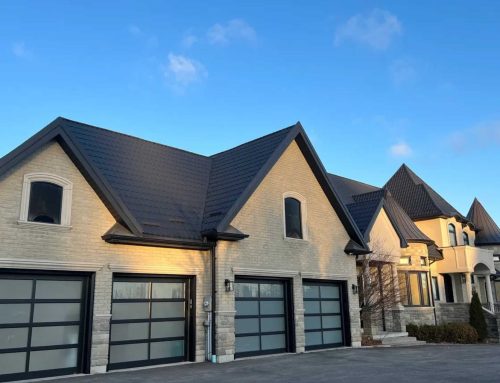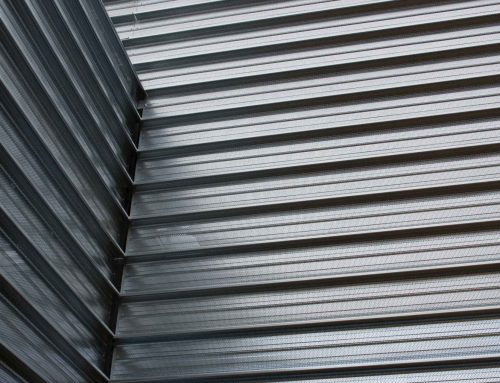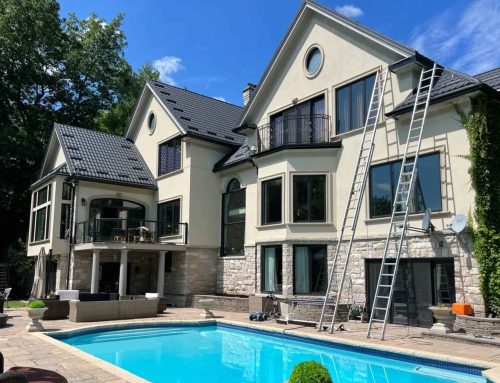A home’s exterior is its first and most important line of defence against the elements. It is a complex system of interconnected components working in harmony to protect the structure. For many property owners, however, exterior maintenance is a daunting task, and small issues are often ignored until they escalate into major, costly emergencies. A proactive approach to care is the single most effective strategy for protecting a home’s structural integrity and financial value. Simple, consistent maintenance can prevent the need for a premature roof replacement, while understanding how to approach tasks like power washing correctly can prevent accidental damage. This guide will break down exterior maintenance into simple, manageable steps for your roof, siding, and windows. This also provides clear tips to keep them in peak condition and ensure your home stands strong for years to come.
The Guardian Above: Your Roof’s Critical Role
The roof is the home’s primary shield. It is engineered to shed thousands of litres of water, bear the weight of heavy snow, and withstand powerful winds. It is also the guardian that protects every other part of the structure from the top down. In a climate with four distinct seasons, a roof is under constant stress. Damage from hail, ice dams forming at the eaves, and shingles being lifted by high winds are all common issues that can compromise its integrity. A small breach in this primary shield can allow water to penetrate the underlying roof deck, leading to rot, mould in the attic, and eventually, leaks inside your home.
The most critical maintenance task for any roofing system is ensuring its drainage is flawless. This is why it is so important to clean your gutters effectively at least twice a year, in the late spring and again in the fall after the leaves have dropped. Clogged gutters prevent water from escaping, causing it to back up and seep under the shingles, where it can rot the fascia boards and roof sheathing. In winter, this trapped water freezes, creating heavy ice dams that can cause extensive damage. A few hours spent clearing your gutters is one of the most effective ways to prevent thousands of dollars in water-related repairs.
The Armour for Your Walls: Siding’s Protective Power
While the roof protects from above, the siding acts as the armour for the home’s vertical walls. Its job is to protect the structural sheathing and insulation from wind-driven rain, snow, and damaging UV rays. When siding is in good condition, it creates a continuous, weatherproof barrier. However, even small cracks, gaps, or loose panels can create an entry point for moisture. This can lead to hidden rot in the wall cavity and soak the insulation, drastically reducing its effectiveness and allowing mould to grow. A well-maintained exterior is the first step to a healthy interior.
Beyond protecting the structure, a seamless siding system is a key component of a home’s energy efficiency. Gaps in the siding or failed caulking around windows and doors allow for significant air leakage, creating drafts that make a home uncomfortable and force the furnace and air conditioner to work harder. Keeping this building envelope sealed is crucial for managing utility costs. In fact, a well-maintained siding can help lower your energy bills by preventing conditioned air from escaping and unconditioned air from entering. A simple visual inspection each season can help you spot and seal these costly leaks.
The View to Efficiency: Windows as Thermal Shields
Windows play a unique dual role in a home’s exterior. They are designed to provide natural light and a view of the outdoors, but they are also potential weak points in the home’s thermal envelope. Old, inefficient windows are a major source of energy loss. Heat is conducted directly through single-pane or poorly insulated glass, and drafts can enter through worn-out seals and warped frames. One of the most common signs of a failing window is condensation between the panes of a double- or triple-pane unit, which indicates the insulating gas has escaped and the window’s efficiency is permanently compromised.
Regular maintenance can significantly extend the life and performance of your windows. It is important to inspect the caulking around the exterior of the window frame annually and reapply it if it is cracked or pulling away. This simple step prevents water from seeping behind the siding. For operable windows, keeping the tracks, sills, and weep holes clean is essential. Weep holes are small holes in the bottom of the frame that allow water to drain out; if they become clogged with dirt or debris, water can back up and leak into the wall.
A Proactive Plan: Your Seasonal Maintenance Checklist
A seasonal approach makes exterior maintenance manageable. In the spring, after the last of the snow has melted, conduct a thorough walk-around inspection. Look for any damage the winter may have caused, such as cracked siding, loose shingles, or damaged gutters. This is also the perfect time for a gentle cleaning. A soft brush and a garden hose, or a power washer on its lowest-pressure, widest-angle setting, can remove the grime of winter. Be extremely cautious with power washers, as a high-pressure stream can easily damage siding and break window seals.
Summer is the ideal time for repairs. Address any issues you found in your spring inspection. This could involve replacing a damaged piece of siding, securing a loose shingle, or repainting faded trim. This is also a great opportunity to modernize your home with small but impactful upgrades, like a new front door colour or updated exterior light fixtures. In the autumn, the focus shifts to preparation. This is the most critical time to clean your gutters and downspouts. Ensure they are completely clear of leaves and debris to prepare for fall rains and the eventual spring melt, preventing ice dams and water damage.
When to Call in the Pros: The Value of Expert Help
While many maintenance tasks are well within the reach of a diligent homeowner, some jobs are best left to the professionals. This is especially true for anything involving heights or complex repairs. If you notice signs of a roof leak, such as water stains on your ceiling, it is crucial to call a reputable construction or roofing company for a professional inspection. They have the training and safety equipment to get on the roof and identify the source of the problem, which may be a subtle issue like failed flashing around a chimney that is not visible from the ground.
Hiring a professional is an investment in peace of mind. For significant damage, a professional repair ensures the job is done correctly, using the right materials and techniques to create a lasting, weatherproof seal. These repairs often come with a warranty, which provides an extra layer of protection. Timely professional intervention prevents small problems from becoming catastrophic, system-wide failures that can cost tens of thousands of dollars to fix. It is the smartest way to protect the long-term health and value of your home.
Your Home’s Best Defence is a Good Offence
A proactive and consistent approach to exterior maintenance is key. It preserves your home’s value, comfort, and structural integrity. Treat your roof, siding, and windows as a single, interconnected system. Give each component the regular attention it needs. This will prevent the vast majority of costly, stress-inducing repairs. A simple seasonal checklist is a great tool. Combine it with the wisdom to call for professional help when needed. This transforms maintenance from a daunting chore into an empowering act of homeownership. This strategy is not about spending more money. It is about spending smarter, ensuring your home remains a safe, beautiful, and valuable asset for decades to come.




